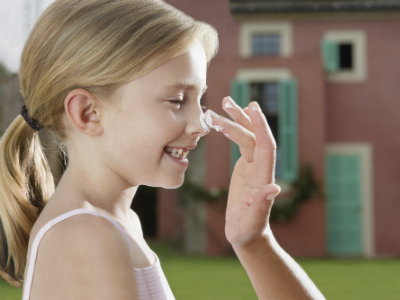
While your child squirms and fidgets, you slather him with sunscreen before going outdoors. The struggle is worthwhile. According to the Skin Cancer Foundation, one nasty sunburn in childhood doubles your risk of developing serious skin cancer later in life. Unfortunately, your sunscreen may not be providing as much protection as you think and may not be safe for your child.
Sunscreen Safety Issues
• The sun emits two forms of ultraviolet radiation – UVA and UVB – that can lead to skin cancer and premature skin aging. Broad spectrum sunscreens are supposed to protect the skin from both UVA and UVB rays but many offer inadequate UVA protection.
• SPF (skin protection factor) ratings indicate a product’s ability to protect against sunburn from UVB rays but don’t protect against deep tissue damage caused by UVA radiation. Sunscreens with SPF ratings above 15, which blocks 94% of UVB rays, offer little additional benefit, according to WebMD.
• Some sunscreens contain chemicals that may be harmful to children. The Mayo Clinic recommends sunscreens that contain inorganic filters such as titanium dioxide and zinc oxide and recommends avoiding sunscreens that contain vitamin A (retinol or retinyl palmitate), oxybenzone (synthetic estrogen) or bug repellent (DEET). There is also concern about popular spray sunscreens which contain chemical particles that are not safe to breathe. Sunscreens should not be used on infants younger than 6 months.
Protect Your Child from Sun Exposure
• Seek out shade when outdoors.
• Dress children in protective clothing.
• Apply moisture-resistant sunscreen liberally 30 minutes before going outdoors.
• Reapply sunscreen every 2 hours.
Horizon Education Centers staff recommends that parents send their preferred sunscreen to child care with their child.






